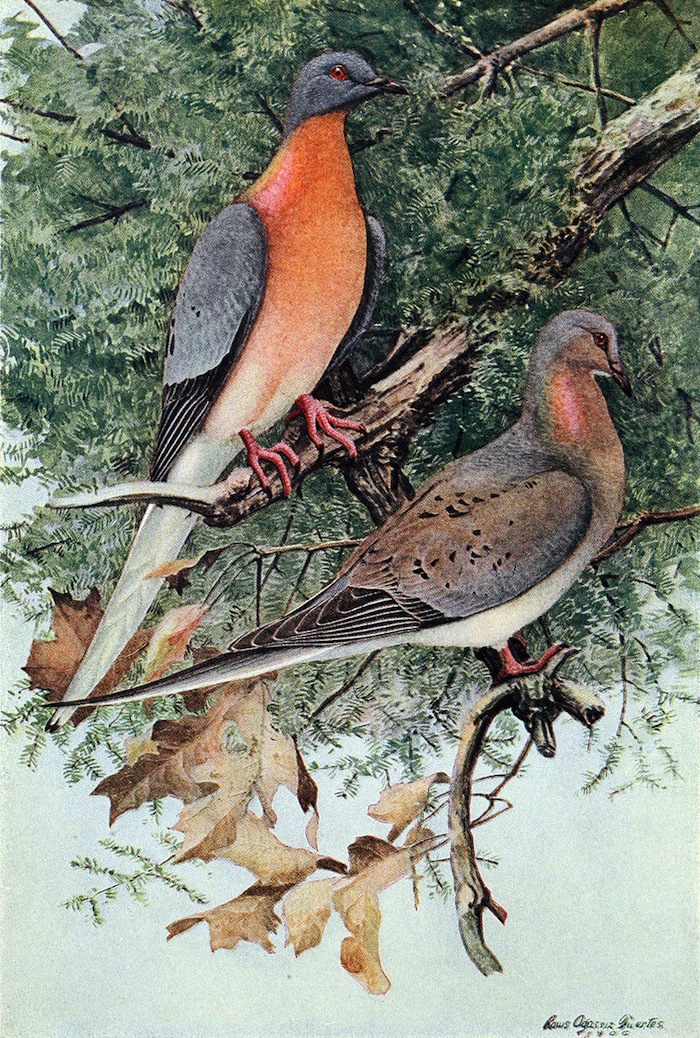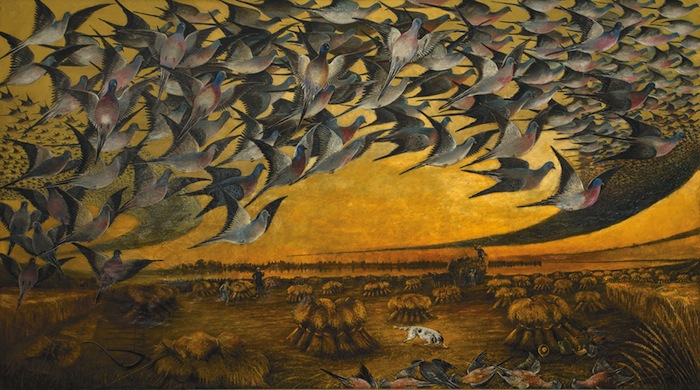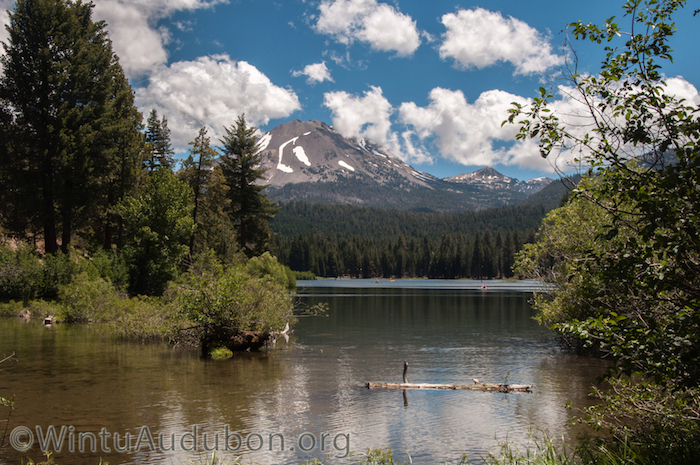
Manzanita Lake with Mount Lassen
Every summer folks from Altacal and Redwood Region Audubon join Wintu Audubon Society for a weekend campout at Lassen Volcanic National Park. Click on photos for full sized images.
The weather was perfect, with some cloud cover and cooler temperatures we escaped the valley heat for a couple of days. We had an excellent turnout for our Saturday morning walk at Manzanita Lake which began with White-headed Woodpeckers at the visitor center parking lot. As we began our walk we found the resident American Dippers (Cinclus mexicanus) on Manzanita Creek.
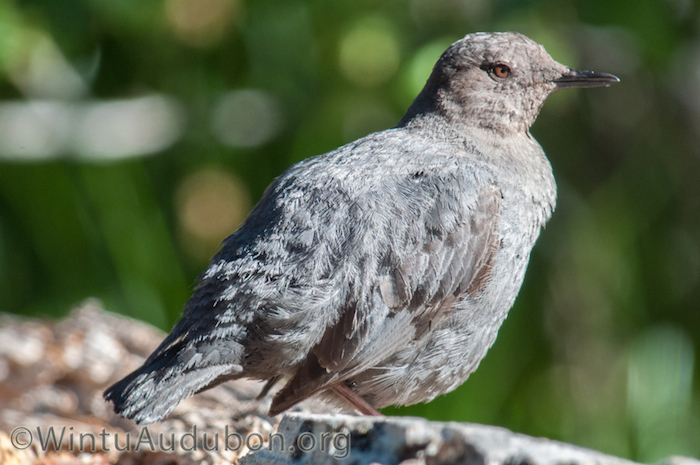
American Dipper
There were plenty of boisterous Steller’s Jays (Cyanocitta stelleri) to hear and see as we approached the picnic and boat launch area of the lake…
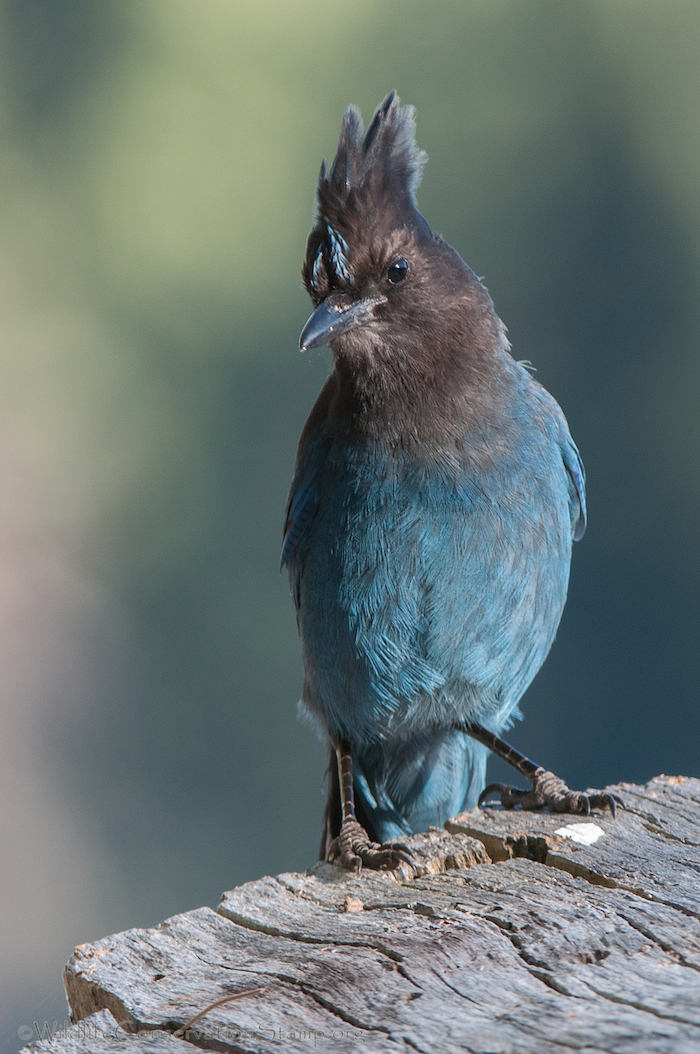
Steller’s Jay
and we were also treated to a close up climbing display by two Brown Creepers (Certhia americana) that were putting on quite a show right in front of us on the trail.
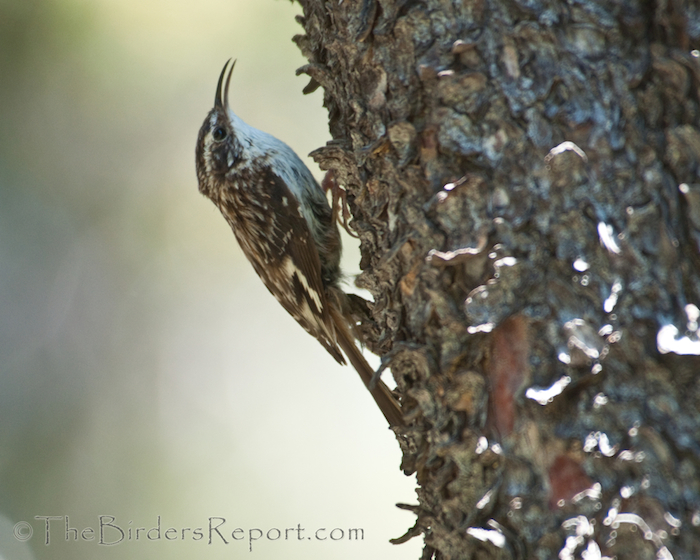
Brown Creeper
Just beyond the boat ramp there is a huge downed log that lies on its side above the water, right next to the trail. This log houses possibly more than one species of cavity nesting bird but every year I have visited Manzanita Lake there have been Tree Swallows (Tachycineta bicolor) nesting in it and performing their amazing aerial displays above the water. I photographed this one as he perched on a branch above the cavity.
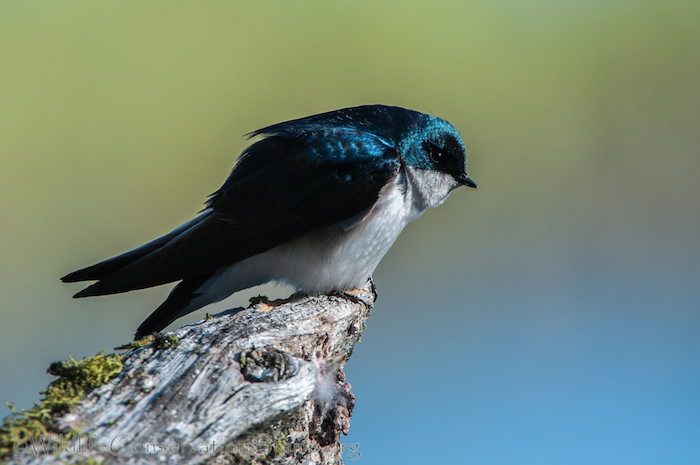
Tree Swallow Male
As we continued around the South side of the lake we saw a female Bufflehead (Bucephala albeola) with her ducklings…
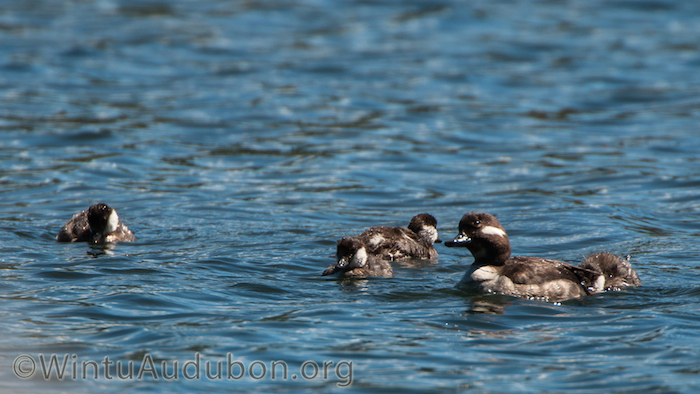
Bufflehead Female with Ducklings
and an American Coot (Fulica americana) teaching her Cootlets how to forage.
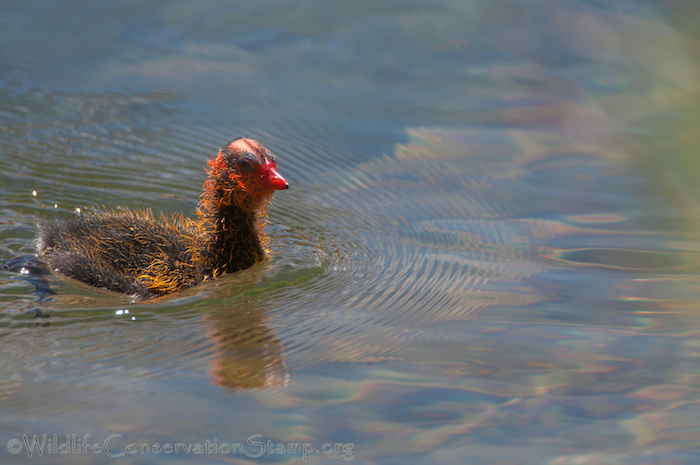
American Coot Chick
Making our way along the western edge of the lake, where the willows hug the water and the manzanita and scrub own the other side of the trail, we searched for a Green-tailed Towhee to no avail. We saw Yellow Warblers, Orange-crowned Warblers, Yellow-rumped Warblers and even Cassin’s Finch but alas, no Towhees. However, one of the lake’s resident Osprey (Pandion haliaetus) flew up into one of the pine trees at the water’s edge to everyone’s delight.
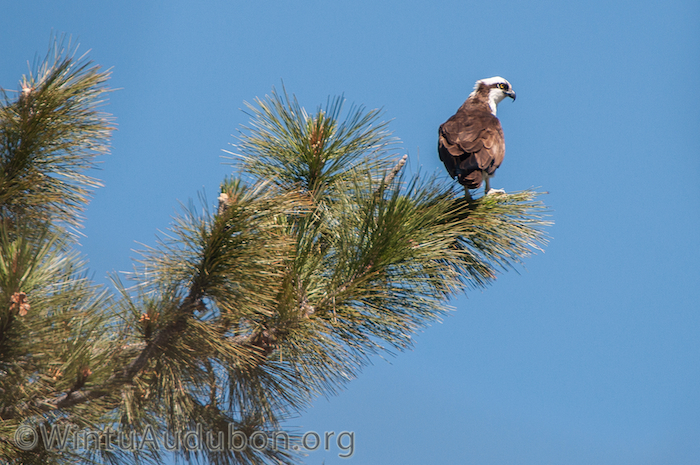
Osprey
We also found a very cooperative male Western Tanager (Piranga ludoviciana) that was carrying several insects to feed to some undoubtedly hungry nestlings nearby.
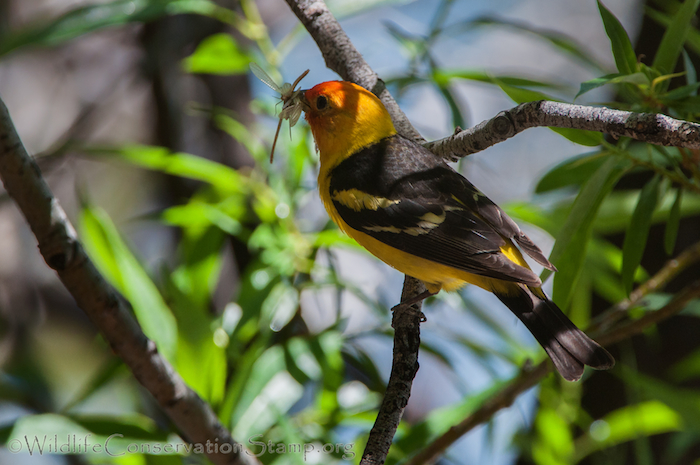
Western Tanager Male
He was very gracious with his time and I was able to snap quite a few photos of this gorgeous bird.
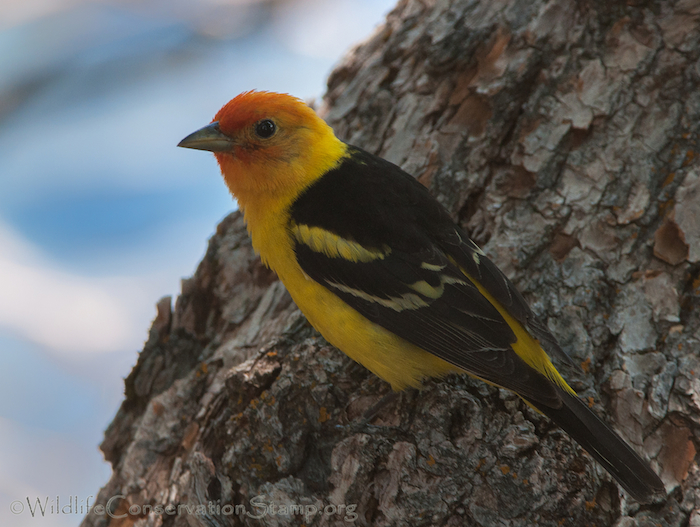
Western Tanager Male
As we reluctantly moved on we found more evidence of nesting and recently nesting birds. There was a Song Sparrow (Melospiza melodia) bringing beaks full of insects to its young as well…
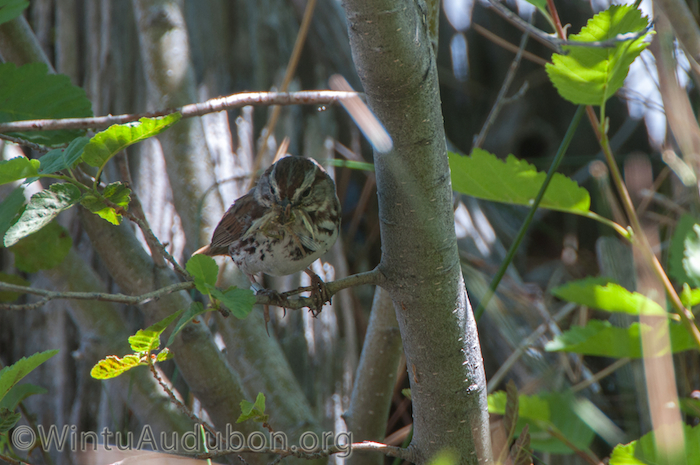
Song Sparrow
and Red-winged Blackbirds (Agelaius phoeniceus).
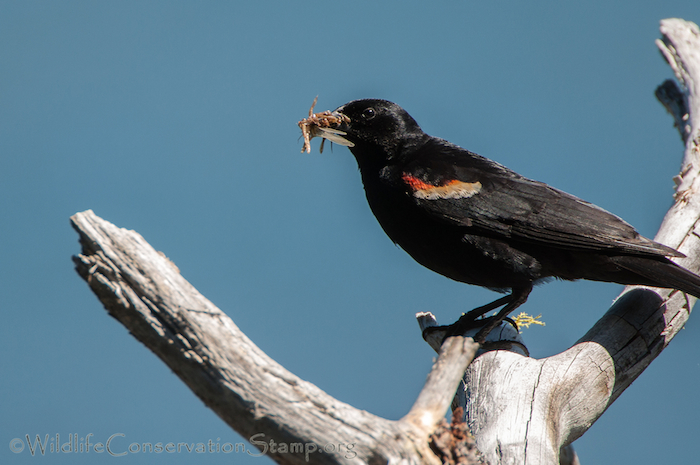
Red-winged Blackbird Male
Then an adult male White-headed Woodpecker (Picoides albolarvatus) was spotted with another male White-headed Woodpecker. Upon closer observation we surmised that the second woodie was a juvenile being educated by his male parent in the finer points of woodpecker behavior.
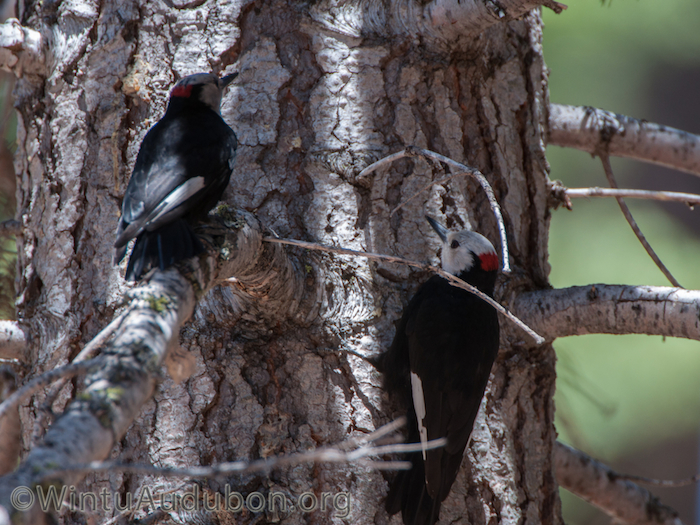
White-headed Woodpecker Juvenile Male (left) with Adult Male (right)
As we crossed the narrow part of the trail bridging the outlet flow of the lake, near the kiosk at the south entrance to the park, we saw something I had never been able to witness before, an adult Pied-billed Grebe (Podilymbus podiceps) carrying young on its back. That was the highlight of the morning walk for this birder!
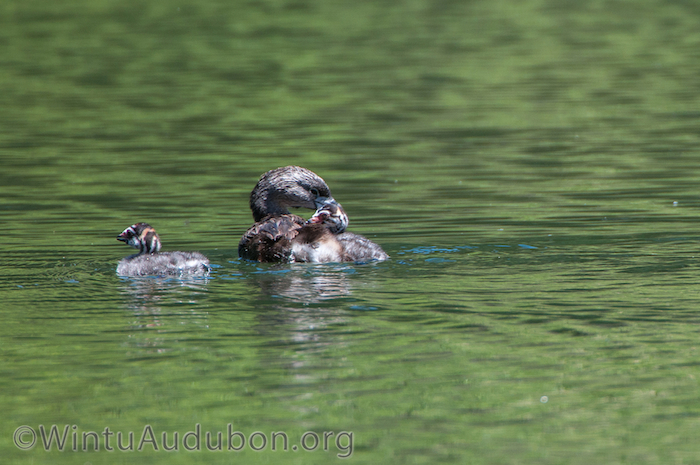
Pied-billed Grebe with Chicks
